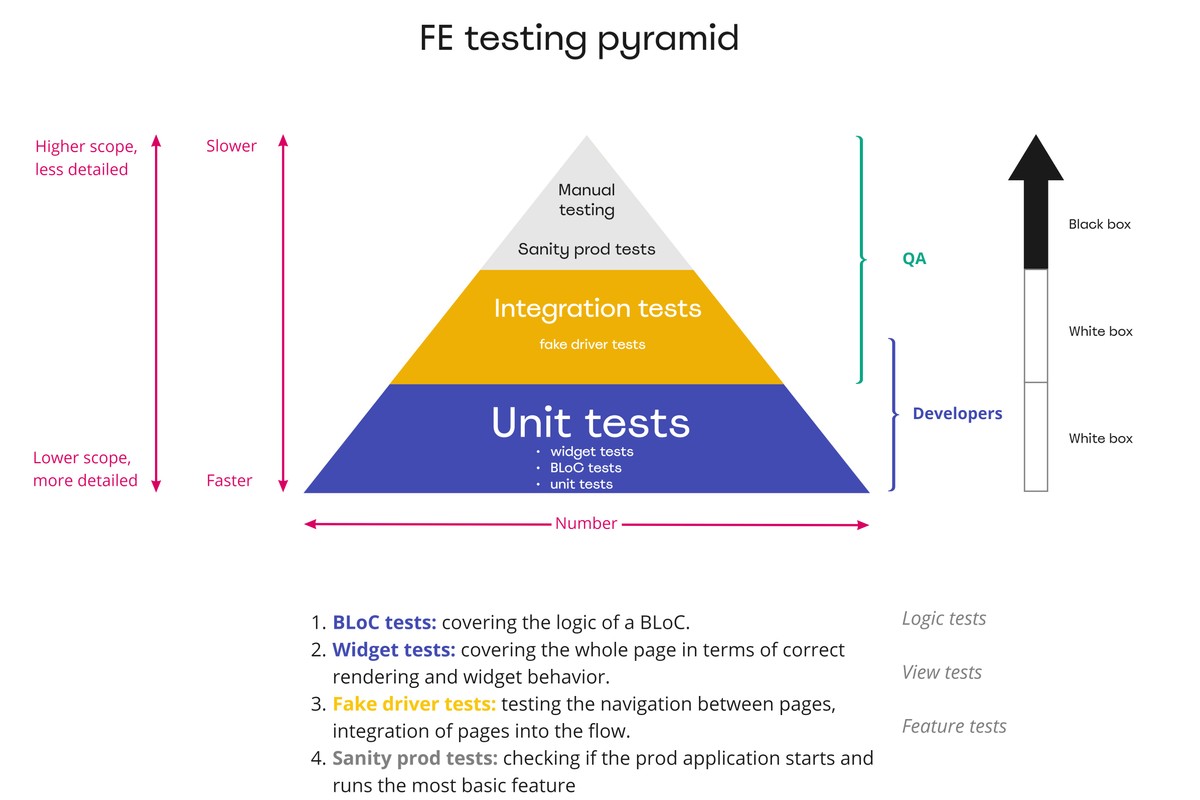Frontend Testing
Frontend testing ensures the functionality, usability, and visual consistency of a software’s user interface, validating that it behaves as expected across different devices, browsers, and user interactions.

Manual testing
Manual testing is the process of manually executing test cases without the use of automated tools to identify bugs and ensure software functionality. It focuses on understanding user behavior and checking the application for usability, reliability, and errors in real-world scenarios. Though time-consuming, manual testing is essential for tasks requiring human judgment, such as exploratory testing or verifying the user interface.
For proper execution and filing test cases can be used Test Plans as described here.
Automation testing
Automation testing leverages platforms like Flutter Driver tests, Cucumber, Appium, and BrowserStack to streamline the testing process and ensure software reliability across diverse environments.
Test plans
A test plan is a detailed document that outlines the strategy, objectives, resources, schedule, and scope of testing for a software project. It defines the testing approach, test cases, and criteria for success, ensuring that all aspects of the application are thoroughly evaluated. A well-structured test plan serves as a roadmap for the testing process, helping teams stay organized, aligned, and focused on delivering a high-quality product.
Backend Testing
Backend testing can be divided into two categories as well as the frontend - manual & automated. Automated testing occurs at several different levels of the development & deployment process with the goal to achieve the best quality of the final product.